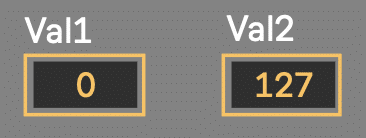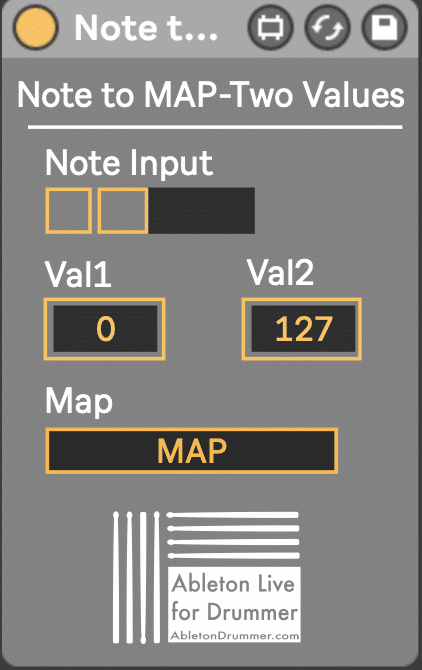Intro
The Note to MAP devices are giving you some more flexibility then using normal MIDI MAP mode in Ableton Live. First of all you get the chance to not only have to stick to only one function/one mapping in your Ableton Live Set. Just by (de-)activating devices you can set-up and switch between multiple functions for just one MIDI note to trigger. Especially for live-sets and performances you might want to use the same pad or button of your external midi controller to trigger different things (e.g. Audio effects) in different parts of your performance.
Another advantage of those devices is to set-up presets and re-call those. (Up to this moment Ableton Live doesn’t support saving or re-calling certain MIDI mappings natively, they can be only stored in ‘whole’ Ableton Live Sets.) This way you could get a faster and better workflow.
Note to MAP – Two Values – Manual
Note Input
The “Note To Map” Max for Live devices are designed to be triggered incoming MIDI notes. Make sure that your MIDI IN routings and settings like “ARM”ing or “Monitor IN” on the MIDI track are set the way that the device will receive MIDI notes.
1.Switch on the Note Input

2.Set the MIDI Note Pitch:
You can press “S” (= ”SYNC”) to make the device ‘listen’ to your MIDI note input. Then just trigger/hit the MIDI note e.g. from your external controller and the pitch of this note will be set automatically.
You can as well edit the pitch value by putting in the value in the pitch number/note field by selecting it and using your mouse (slide up+down) or putting in the value with your computer keyboard.
Triggered Values
You can now edit the two values you will be switching/triggering one after another.

MAP a parameter
You can now MAP a parameter of your Ableton Live set. E.g. you could MAP a track volume slider, a send wheel or close to all parameters of audio effects, midi effects and instruments.
1.Just press the MAP button to set it into ‘mapping-to-target’ mode.
2.The button will blink between yellow and red now.
3.Then click on the parameter you want to map.

4.The name of the parameter will be shown now.
5.To ‘un-map’ the parameter, click on the X to the right.



